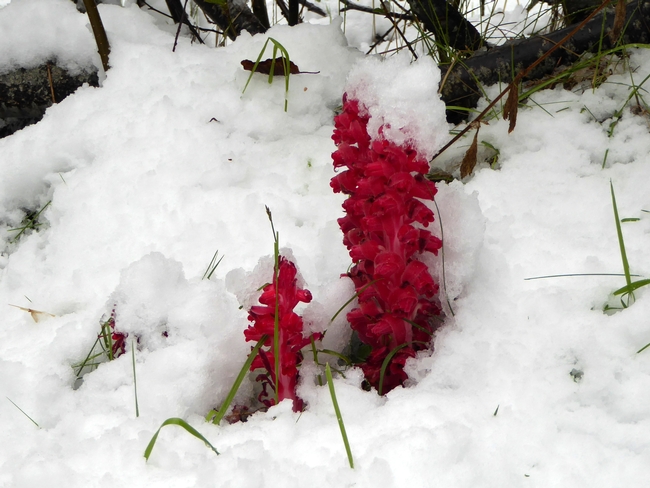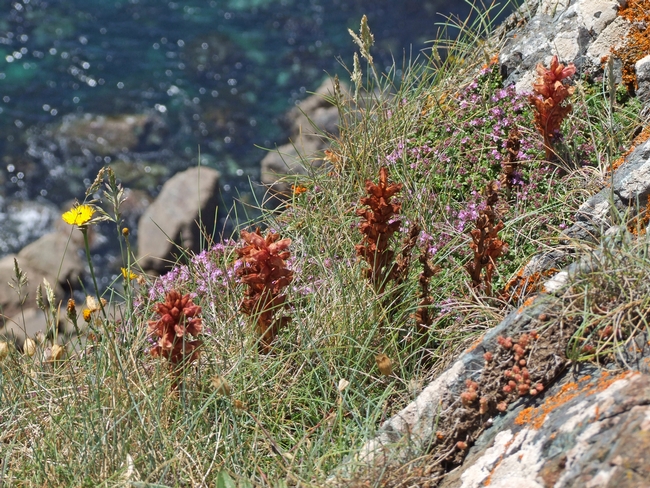Vampire plants!
Just like Dracula, parasitic plants get their nutritional needs met by feeding off other plants. Instead of fangs, these parasitic plants have specialized structures called haustoria that they use to pierce the cells of their host plant and suck out nutrients. In Latin, ‘haustor' means ‘the one who draws, drains or drinks.'
Unlike Dracula, these nefarious plants aren't folklore and you don't have to travel to Transylvania to find them. Below are three nutrient-sucking vampire plants you'll find in landscapes across California!
Snow plant
The common name snow plant doesn't give clues about its more sinister scientific name, Sarcodes sanguinea, which translates to ‘the bloody flesh-like thing' given its name because of its bright red color by famous botanist John Torrey. Sarcodes feeds off conifers and the fungal community that supports conifers. This plant doesn't need access to sunlight to grow, thriving in the dark coffin-like solitude of the forest floor.
California dodder
Though they rarely kill their host plant the California dodder, aka Cuscuta californica, is a parasitic vine that tightly entwines its host. Spending most of its life without any contact with the soil, dodder's thin orange filaments cover its host like the hair of Cousin It. Dodder seedlings are aggressive predators, locating their prey within days of sprouting. After attaching itself to its host plant the dodder's roots die, becoming completely dependent on its host to live.
Hellroot
Hellroot, or Orbanche minor, sends 12” flower spires up from the ground, as if Hades fingers were reaching up from the underworld. This parasitic plant has showy flowers that range in color from shades of pink to yellow and white. Hellroot cannot live without its host plant and prefers to suck nutrients from sweet red clover and members of the pea and daisy families.
Move over Bram Stoker, Botany is serving up the sinister this year. Happy Halloween!








Posted by Kitty rozenstraten on October 29, 2022 at 8:12 AM